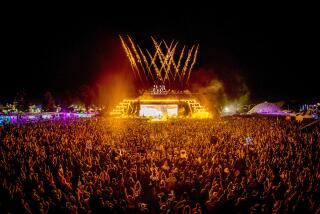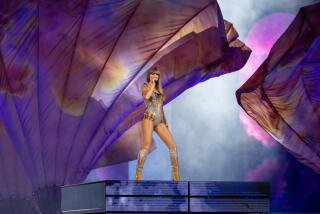Rebuttals to dance critic getting loud
- Share via
Re “Quiet!” (July 11), both the John Anson Ford Amphitheatre and Viver Brasil Dance Company were surprised to learn of critic Lewis Segal’s experience July 5 and would like to put his comments in perspective.
As far as Ford staff knows, he is the only one of 1,200 people in attendance who left or had a bad experience during the concert. Mr. Segal was sitting in the fifth row, closer to the stage (and sound system) than many in the house, but was among packed rows of people, many of whom were clapping, swaying and generally having a great time. At the end of the concert there was an extended standing ovation.
Certainly, it was Viver Brasil and the Ford’s intention to create an enjoyable sound environment, and not to create a feeling of discomfort among audience members. The Ford, in its own informal survey, found audience members on both sides of the issue, but even those who thought the sound was too loud did not find it objectionably so. Viver Brasil did its own poll among professional musicians and Brazilian music aficionados who attended and all were extremely happy with the quality of the sound’s engineering and design.
Dave Pier, Linda Yudin
and Luiz Badaro
Los Angeles
David Pier is the managing director of the John Anson Ford Amphitheatre; Linda Yudin and Luiz Badaro are the co-artistic directors of the Viver Brasil Dance Company.
*
Lewis Segal missed Viver Brasil’s humdinger of a show, “Bahia: Land of Magic!” Fortunately, the rest of us in the near-capacity crowd overcame his departure, took in the experience and, dare I say it, even enjoyed ourselves, blissfully unaware of the critic’s doom-and-gloom, irrelevant tirade-to-come in his Friday piece.
His apparent refusal to actually review the performance to which he was assigned, choosing instead to write a personal essay about amplification, reminds one of an ostrich burying his head in the sand, thereby refusing to watch and enjoy the parade because of the dust it kicks up. Relax, it’s OK to have fun!
Afro-Brazilian rhythms, rooted in religious tradition, are acoustic and played on percussion instruments. The rhythms drive the dance, song and movement; they are not mere accompaniment. The music is meant to be loud as a guide to the singers and dancers, as a communication to the community.
Bernard Magier
Santa Monica
More to Read
The biggest entertainment stories
Get our big stories about Hollywood, film, television, music, arts, culture and more right in your inbox as soon as they publish.
You may occasionally receive promotional content from the Los Angeles Times.










